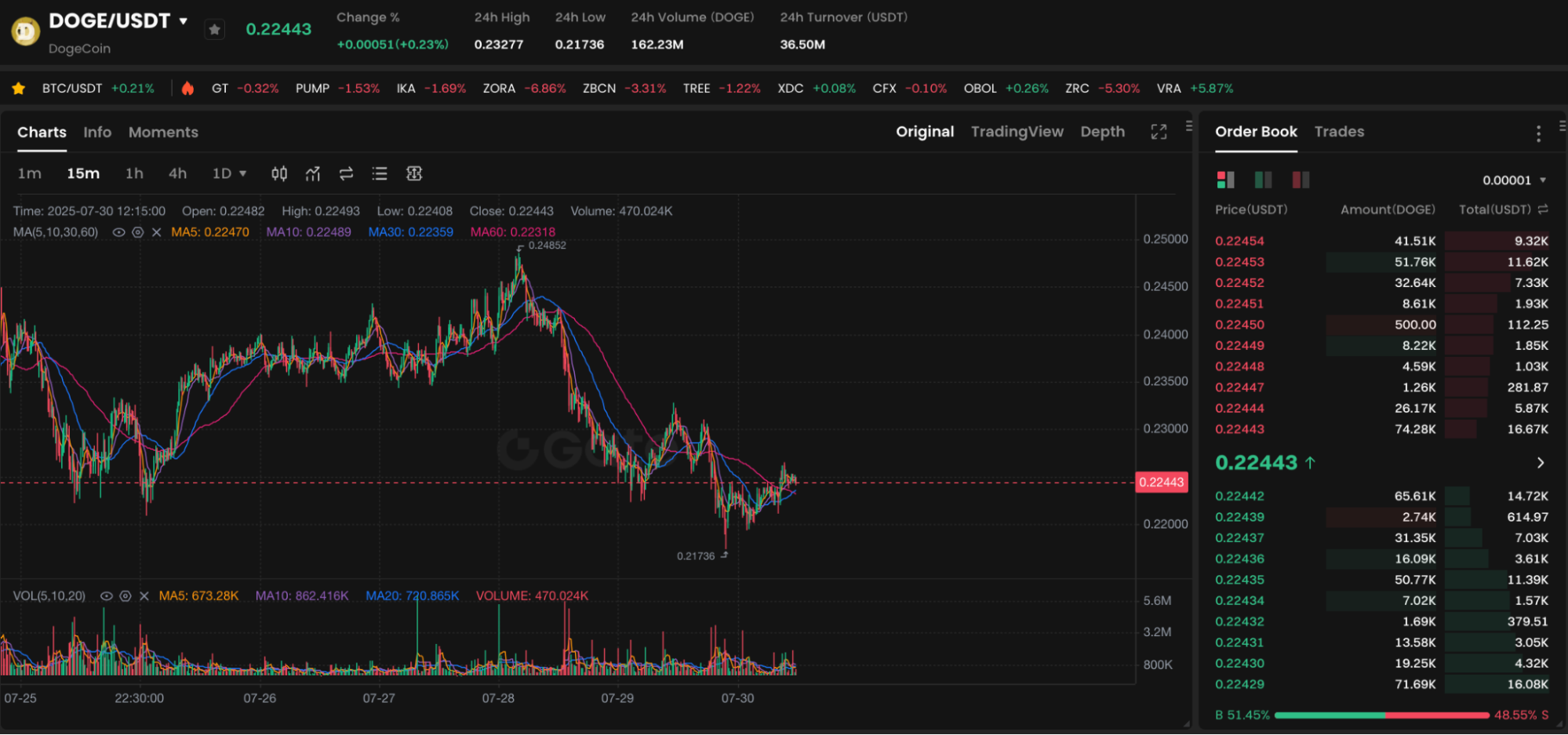Is Dogecoin a Stablecoin? In-Depth Analysis of DOGE’s Attributes and Market Position
What Are Stablecoins?
Stablecoins are a distinct type of cryptocurrency whose value is pegged to relatively stable assets, such as the US dollar, euro, or gold. Their main objective is to maintain price stability and reduce risks during transactions or as a store of value. Common stablecoins like USDT, USDC, and DAI achieve their stability through methods such as fiat reserves, over-collateralization with crypto assets, or algorithmic mechanisms.
For example, USDT (Tether) is issued based on a 1:1 fiat reserve ratio, with each USDT typically backed by an equivalent amount of US dollar reserves. Its price fluctuations are minimal, usually not exceeding 0.5% within a 24-hour window. This level of stability has made it widely used for cross-border transfers, on-chain hedging, and DeFi staking.
The Origins and Uses of Dogecoin
Dogecoin (DOGE) was launched in 2013 as a lighthearted cryptocurrency, originally created as a meme joke by Billy Markus and Jackson Palmer. Its iconic Shiba Inu logo quickly went viral, giving rise to a community known for humor and inclusivity.
While Dogecoin lacks significant technical innovation, it has found applications in microtransactions and social tipping. Tesla CEO Elon Musk’s repeated endorsements have propelled Dogecoin into the global spotlight, making it a recurring topic in the market.
However, Dogecoin’s design did not prioritize price stability. Its inflationary model, unlimited total supply, and susceptibility to public sentiment set it apart fundamentally from stablecoins.
Dogecoin Price Review: July 2025

Chart: https://www.gate.com/trade/DOGE_USDT
As of July 30, 2025, Dogecoin was trading at $0.2248, down 1.2% over the past 24 hours. While this price move is relatively modest, Dogecoin’s monthly volatility can exceed 10%. For instance, in early July, Dogecoin surged more than 17% amid rumors of integration with social platform X’s payment system, only to sharply pull back as the market took profits.
Such dramatic price swings are almost unheard of with stablecoins. Over the same period, USDC’s value fluctuated less than 0.3% around its $1 peg. This starkly highlights that Dogecoin lacks the “price-pegged” stability that defines a stablecoin.
Is Dogecoin a Stablecoin?
Across multiple dimensions, the answer is no.
1. Dogecoin is not backed by fiat reserves and does not employ any algorithmic mechanism for price stability; its value is determined entirely by market supply and demand—unlike most stablecoins.
2. Dogecoin’s price is highly volatile and easily influenced by celebrity endorsements, social media buzz, and speculative sentiment. For example, a single supportive tweet from Elon Musk can send DOGE’s price soaring in minutes, while negative sentiment can trigger rapid declines.
3. Dogecoin was never intended to be “price-stable.” Instead, it serves as an internet culture icon—a product of community tipping, online humor, and hype culture. This contrasts sharply with stablecoins like USDT and DAI, which are designed for cross-border settlement and risk mitigation.
Therefore, based on its technical design, price behavior, and application, Dogecoin cannot be classified as a stablecoin.
Dogecoin’s Potential and Risks as a Payment Method
Although some businesses now accept Dogecoin for payments—including certain e-commerce platforms, restaurants, and social platform X—and some developers are working to integrate it into broader payment ecosystems, substantial challenges remain for Dogecoin’s viability as a payment method.
The primary risks include:
- Significant price volatility, which can cause value swings between initiation and completion of payment, impacting merchants and users alike.
- Slow network development and upgrades, limiting its ability to support large-scale payment use cases.
- Lack of institutional backing and less robust trust mechanisms compared to stablecoins.
In contrast, stablecoins offer clear advantages for cross-border payments and on-chain settlements due to their price stability and transparent reserve frameworks.
Investment Recommendations and Conclusion
Dogecoin is a crypto asset with strong community backing, especially among fans of meme culture. However, it is not a stablecoin and does not offer price stability. For beginner investors, allocating a small portion of funds to Dogecoin for speculation or entertainment may be reasonable. But for those seeking asset preservation or reliable payments, stablecoin products such as USDT and USDC are better suited.
Dogecoin’s existence demonstrates the diversity of the crypto world, but it’s essential to understand its core features. While keeping up with trends, investors must remain rational and actively manage their risks.





